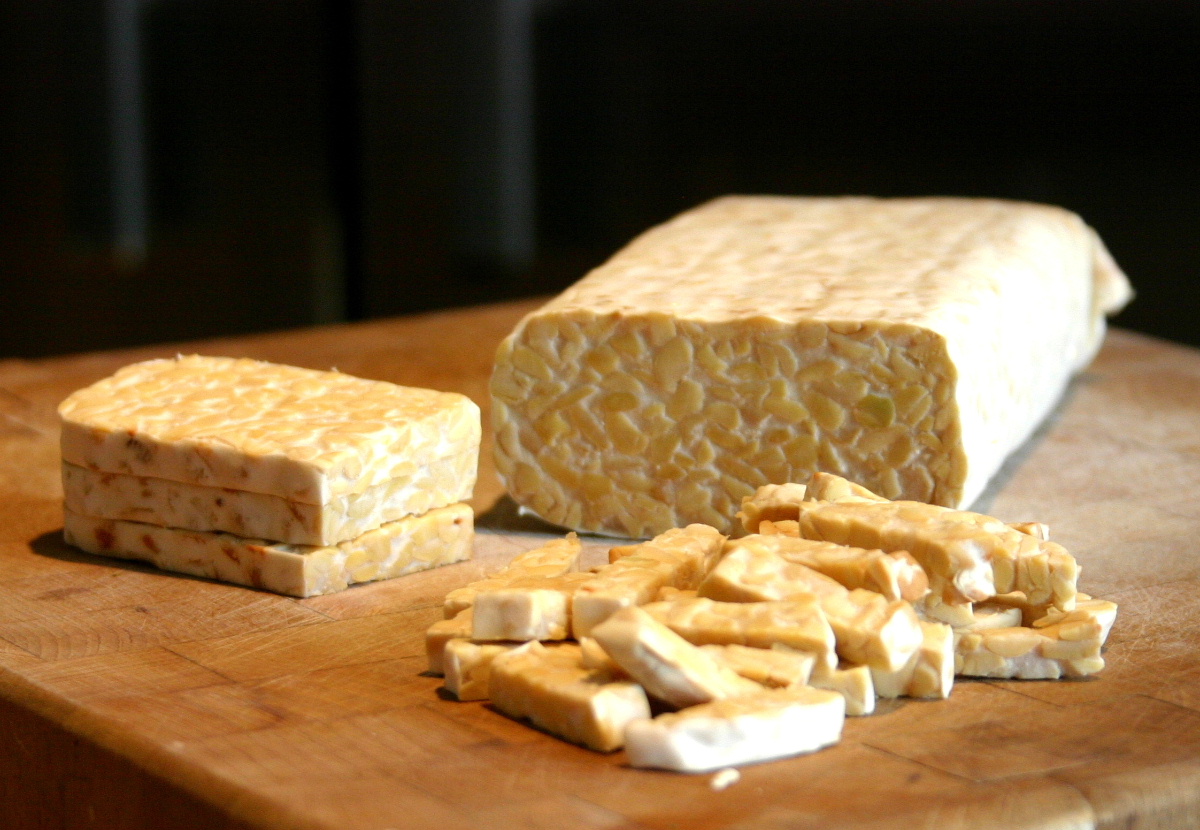Fungal Fermented Foods
By Chris Bailey
The benefits of fermented foods are making headlines more and more these days. We are encouraged to eat things like yogurt and sauerkraut as probiotics that develop our “good bacteria”. The term “fermentation” comes from the activity of microbes (the “ferments”) as they digest, multiply and colonize a food. While most fermented foods are made with bacteria, I will focus on those prepared using fungi. A partial list of common foods made with fungi includes: cheese, bread, chocolate, coffee, tea, pickles, olives, salami, soy sauce, tempeh, miso and others. (Alcoholic drinks are produced with the aid of fungal yeasts. Some – such as sake – use filamentous fungi to convert starches to sugars prior to adding yeast.)
Beyond the fantastic flavor and vitamin enhancements, fermented foods are thought to benefit humans in several ways:
- They help create a beneficial gut microbiota
- They are more digestible
- They contain beneficial bioactive compounds produced by the microbes
Generally, fermented foods are shown to add to and enhance the beneficial microflora of the gut, which in turn can help our whole-body system. The Lactobacillus in yogurt is a bacteria that readily exists in our gut and has been shown to help move food through our digestive tract. Yeasts are also present in the gut and help stabilize that system by creating a favorable environment for good bacteria. Today’s research points to the fungi (and fungal fermented foods) as prebiotic rather than probiotic. This means that they promote conditions and act as a food matrix for beneficial bacteria.
The fungi are wonderfully good at breaking down complex molecules into smaller, more absorbable forms such as glucose. The mushrooms that Mycopia grows convert wood into simple sugars that provide energy for its growth. During this process, they produce enzymes that cleave bonds of large molecules that are difficult for humans to digest. Essentially, fermented foods can pre-digest food for us which makes the food energy more readily available.
During the active growth of fermentation, fungi make and utilize many types of compounds. These can be divided into two categories: primary metabolites and secondary metabolites. The former are essential for growth and function, while the latter are not used directly. Digestive enzymes are primary metabolites. Since fungi don’t have mouths or digestive tracts, they must send these enzymes out into their environments where they break down food for re-absorption. Thus, foods fermented by fungi also contain enzymes which can assist our own digestion of complex carbohydrates and proteins. As for secondary metabolites, a perfect example is the antibiotic Penicillin. The fungus secretes it to protect itself from bacteria that might harm or compete with it. When we eat fungal fermented foods, we also get a dose of the secondary metabolites.
Tempeh is a traditional Indonesian product that is quite similar to a product we’ve been producing at Mycopia for over 40 years. To ferment tempeh, a container of cooked soybeans (sometimes coconut, peanuts or other seeds) is inoculated with a fast-growing fungus named Rhizopus oligosporus. The cake is incubated for 24-48 hours, during which time the Rhizopus mycelium knits the soybeans into a solid cake. In preparing our Mycopia fermented food, instead of Rhizopus, we grow specially selected fungal species such as reishi on cooked rice rather than soybeans. Once the rice is knit together, we dry and pulverize it to a powder. I mix a tablespoon into my smoothie every day.
The world of fermented foods is vast, growing and exciting. I encourage you to explore the unique flavors and benefits as part of a healthy lifestyle. Along with our mushrooms, of course!

